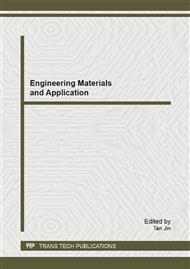p.492
p.499
p.505
p.511
p.517
p.525
p.530
p.538
p.543
Three-Dimensional Flexible Polyimide Based Probe Array with Stiffness Improvement by Using Biodegradable Polymer
Abstract:
This work presents a three-dimensional flexible polyimide (PI) probe array with biodegradable polymer that offers desirable insertion capability. In order to avoid the recording sites position shifts slightly and damage neuron cells when the body moves, the flexible neural probes are more preferable than traditional Si-based neural probes. A sufficient buckling strength of flexible probe is critical for inserting flexible probe into the brain. Here, we used a biodegradable polymer, polyethylene glycol (PEG), to improve the mechanical stiffness of flexible probe. PEG, which is solid state at room temperature and dissolves when immersing in water, was coated onto the flexible probe and the mechanical stiffness of the flexible probe was increased before insertion into the biological tissue. The buckling strength of different probes was simulated using finite element analysis and measured by compression tester. The coated PEG flexible probe maintains sufficient stiffness to facilitate tissue penetration with solid PEG elastic modulus of 660±19 MPa but loses its strength within 25 minutes once immersed in saline. A microassembly method of three-dimensional flexible probe array was also proposed to integrate the flexible probe and their interconnections. In vitro test, the coated PEG flexible probe regained their original impedance of 12.8 kΩ at 1 kHz within 30 minutes of immersing in saline via water absorption and polymer’s biodegradable response.
Info:
Periodical:
Pages:
517-522
Citation:
Online since:
January 2013
Authors:
Keywords:
Price:
Сopyright:
© 2013 Trans Tech Publications Ltd. All Rights Reserved
Share:
Citation:


